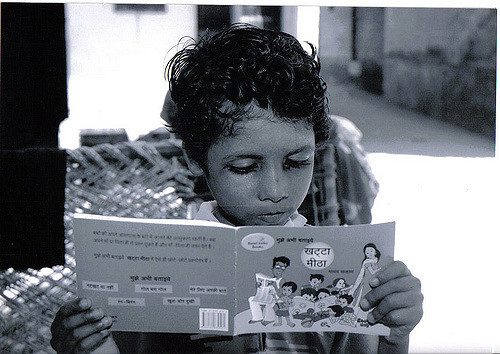TBI Blogs: If Your Autistic Child Has Problems with Communication, You Need to Read This
If you have a child on the autistic spectrum, chances are you’ve worried about how to encourage their communication skills. There are plenty of tools and methods available to help non-vocal individuals communicate effectively, and here’s how you can identify which one works best for your child.

If you have a child on the autistic spectrum, chances are you’ve worried about how to encourage their communication skills. There are plenty of tools and methods available to help non-vocal individuals communicate effectively, and here’s how you can identify which one works best for your child.
Being non-vocal doesn’t have to be the end of the road. If your child has autism and is non-vocal, how would you determine the best mode of communication for him? Consider the following aspects, and take your time answering the following questions:
1. Vocalizations
Does your child make sounds and/or say words? Do you have a ball-park figure for how many words or sounds they usually make? Make a list of all of them and maintain a record of new ones your child picks up.

2. Gross and Fine Motor Abilities
Are your child’s motor abilities at par with other children of the same age? You may need professional help to assess this. An occupational or physical therapist will be able to help with this.
3. Motor Imitation
How good is your child with imitations? Make a list of actions that he/she can imitate. This can prove handy if sign language is chosen as a viable alternative.
4. Visual Skills
Is your child able to track moving objects? What does their ‘attention-shifting’ look like? How well does he/she scan their environment?

5. Receptive Identification of Pictures
Do you find your child looking at pictures to study them? Does he/she like looking at pictures in a book? Can they pick out a picture from an array of them? Identification of such traits can help understand if you can look at building communication through the Picture Exchange System, or through working with a tablet.
6. Reading Ability (Sight or Phonetic)
Does your child read? Do they sight-read, or do they read phonetically? Some children look at the whole word and read it, while others read by sounding the word out. I have worked with a few students who possess an amazing ability to read. One of them was reading even before he said his first word. Having such an ability opens up several avenues for non-vocal communication.

7. Proficiency in Using iPads or Smart Phones
The iPad or other tablets, if used well, can be a boon for non-vocal students. There are many games and applications that can be downloaded and which are beneficial for them. I recently talked to a mother who was all in praise of WhatsApp. She said that the back-and-forth messaging had really helped her teenager move ahead with communication without feeling awkward.
8. Computer and Typing Skills
Does your child display aptitude in typing? Can he/she type words or sentences? This is a great way for them to let us know what they want or to share their thoughts with us.
9. Writing
Does your child display good writing skills? If yes, it can be a very encouraging sign for developing forms of communication.
Once you have answered all the questions related to the nine points above, find a Speech Language Pathologist or a trusted professional. They will help you test your child’s skills and abilities and then zero in on the most effective means of communication for your child.
Remember to step back and study your options, which include, but are not limited to:
- PECS (Picture Exchange Communication System)
- Sign Language
- Augmentative and Assistive Communication Devices
- Typing
- RPM (Rapid Prompt Method) and Letter Boards
Your child may not be able to speak, but they definitely have a lot to say. You can open the door to their happiness, and yours too. You are in charge.
Allow me to share something inspiring with you. Tito Mukhopadhyay is a non-vocal individual on the Autism Spectrum. Through RPM, he says,
“One day I dream that we can grow in a matured society where nobody would be normal or abnormal, but just human beings, accepting any other human being, ready to grow together.” – Tito Rajarshi Mukhopadhyay, The Mind Tree, Arcade Publishing, 2003 © National Autistic Society
Remember, your child understands everything. They have a lot to express inside them, and are relying on you to help them share those thoughts with the world. Are you ready for the challenge?
To find out more about different tools available to help non-vocal autistic children with communication, read TBI Blogs: Autistic Individuals Often Find Verbal Communication Difficult. Here Are 5 Ways to Simplify It!
For more resources on treating children with autism, you can check out the SAI Connections blog.
Like this story? Or have something to share? Write to us: [email protected], or connect with us on Facebook and Twitter.
NEW: Click here to get positive news on WhatsApp!
If you found our stories insightful, informative, or even just enjoyable, we invite you to consider making a voluntary payment to support the work we do at The Better India. Your contribution helps us continue producing quality content that educates, inspires, and drives positive change.
Choose one of the payment options below for your contribution-
By paying for the stories you value, you directly contribute to sustaining our efforts focused on making a difference in the world. Together, let’s ensure that impactful stories continue to be told and shared, enriching lives and communities alike.
Thank you for your support. Here are some frequently asked questions you might find helpful to know why you are contributing?


This story made me
-
97
-
121
-
89
-
167

















